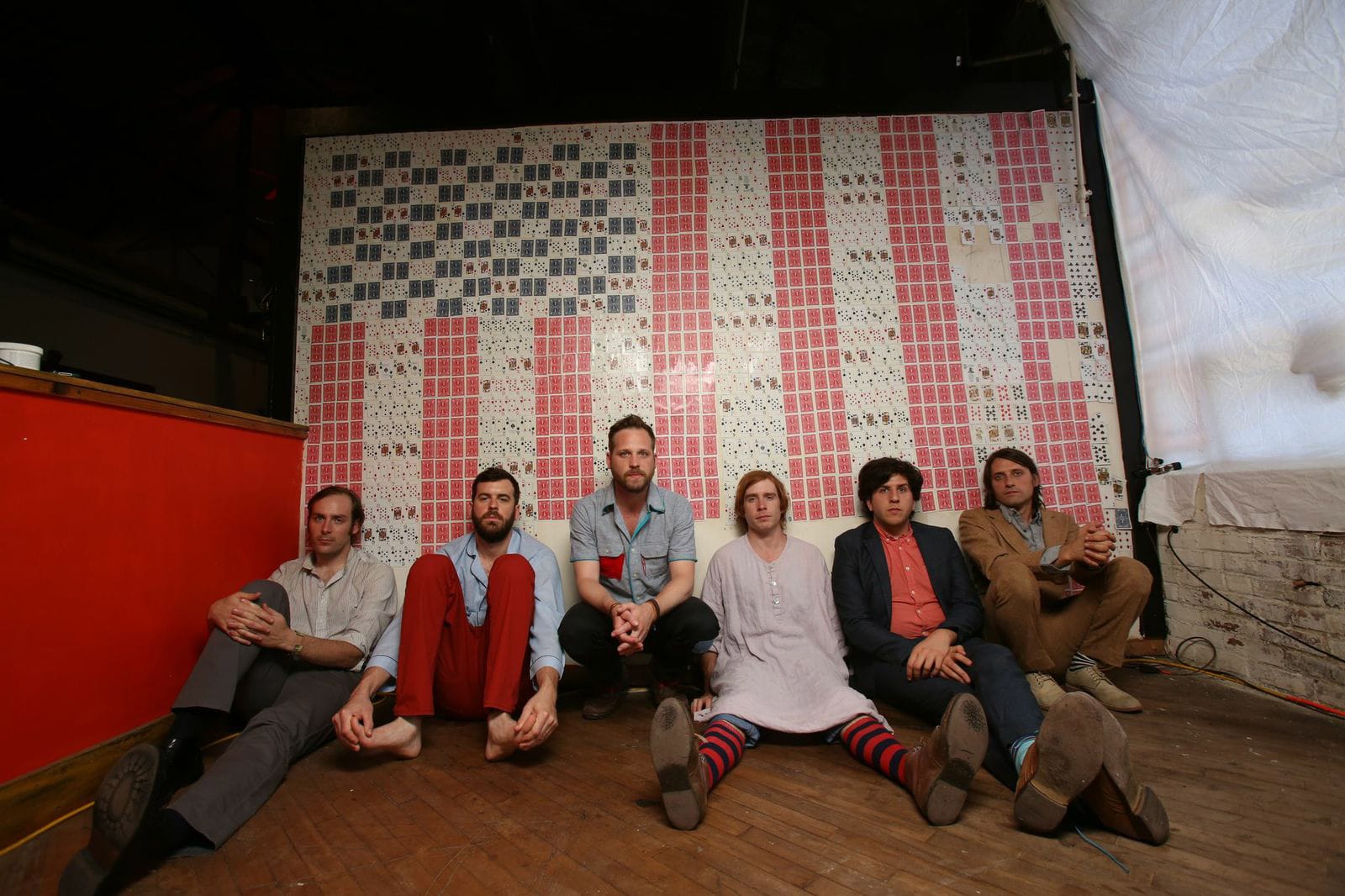Dr. Dog has never been a band that has mapped out the musical direction for its albums before going into the studio. At best, songwriters Scott McMicken and Toby Leaman have only brought in skeletons of songs when the group convened for recording sessions.
Many bands would be unwilling to leave so much to chance when it’s time to hit the record button and create an album. In fact, the one time Dr. Dog used an outside producer on an album — for 2008’s “Shame, Shame” — the lack of advance preparation was a source of conflict between the band and producer Rob Schnapf, who expected Dr. Dog to have full-fledged songs ready to record at the outset of the recording sessions.
If anything, though, McMicken and Leaman have grown even more resistant to developing songs and defining the direction of Dr. Dog’s music since the “Shame, Shame” project.
In fact, for the band’s current CD, “B-Room,” the group came about as close as possible to being completely open-ended about the music that would go on the album.
“Largely, we (McMicken and Leaman) have always kind of come in (to recording) with acoustic guitar, vocals, melody, structure and everything and then turned it loose,” McMicken said of earlier album sessions. “But in this case, it was even more extreme in that we would most of the time not even have any suggestion at all. We’d all just start playing. We recorded hours of jamming and we’d listen back and find where we hit our stride and use those moments to, as a band, write and part out songs. Oftentimes, it was using editing, editing of like a 20-minute jam edited into a structure and getting the best dynamic moments and the best parts, and we’d create a demo that way that we could all then hear as a 3 1/2 bit of music and then go and play from start to finish.”
There was some strategy behind the move by McMicken and Leaman to do even less advance songwriting.
Ahead of Dr. Dog’s 2012 album, “Be the Void,” the group went through a personnel change, adding drummer Eric Slick and multi-instrumentalist/percussionist Dimitri Manos to a lineup that also included guitarist Frank McElroy and keyboardist Zach Miller.
Liking how the revamped lineup had been jelling, McMicken said he and Leaman wanted “B-Room” to be as fully collaborative as possible.
“It was a method of using the totality of the band’s voice as a way at arriving at the songs themselves, just trying to play to everyone’s strengths and encourage everyone’s individuality,” he said.
“It just seems useless at this point, especially initially for me, to, in the case of Eric on drums, at this point in time, I would so much rather find out what his body tells him about the meat of this song than hear his interpretation of what I think it is,” McMicken said. “So yeah, it just comes from a lot of trust in each other as players in our time together.”
The jam-derived approach to songwriting seems apparent on “B-Room.” The band eases into the album a bit with songs like the laid back “The Truth” and “Minding the Usher,” which indeed feel like they could have originally been part of longer pieces of music. But other songs — such as “Distant Light” (which sounds like a could-be hit single), “Phenomenon” (which gets a bluegrassy texture from its banjo and violin) and “Love” (a hooky rocker) — feel more concise, complete and tightly crafted.
Stylistically, “B-Room” is a bit more relaxed, but the songs fit well within the tradition of earlier Dr. Dog albums, blending a strong sense of pop melodicism with a folk-rock sound that frequently has gauzy or loose-limbed psychedelic edge.
Dr. Dog began developing that sound in 1999 in West Grove, Pa., and has steadily grown its following over the course of its eight studio albums.
The group has also stayed true to its core musical style. That doesn’t mean, though, that there hasn’t been growth. And McMicken said the quieter material on “B-Room” has helped the band enrich its live show.
“We’ve always been good at sort of charging out of the gate and just like pedal-to-the-metal energy,” he said. “But it’s the kind of more subtler zones that are kind of a new frontier for us that we’ve all been enjoying a lot. And the new songs offer a lot of that, where the tempo and the dynamic is a little bit more restrained. Historically we always kind of fell flat when we attempted those worlds. But we’re getting better and better with that, with more and more mellow stuff. That feels really good to be able to feel like you’re still creating a powerful, forceful moment, but keeping the tempo spare and keeping the execution delicate. … So that’s kind of the balance, like trying to keep the energy there, but restrained.”



